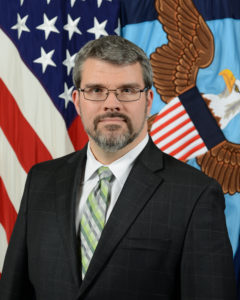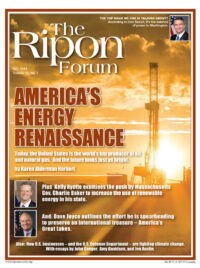
The level of attention that the military has paid to climate change has seemed surprising to some observers. The media often highlights an apparent contradiction between the perceptions that climate change advocates are found on the political left, while national security advocates are found on the right.
Secretary James Mattis – and at least fifteen other senior defense officials during the current Administration – have taken an approach that is pragmatic and mission-focused. From day one – in response to questions during his confirmation process – Secretary Mattis said: “[T]he effects of a changing climate — such as increased maritime access to the Arctic, rising sea levels, desertification, among others — impact our security situation. I will ensure that the department continues to be prepared to conduct operations today and in the future, and that we are prepared to address the effects of a changing climate on our threat assessments, resources, and readiness.” His words are hardly inflammatory, and yet they convey an unequivocal recognition of climate change and a determination to overcome its effects.
The nearest-term impacts of climate change are the threats it poses to DoD infrastructure and readiness. In January 2018, the Department released the results of a vulnerability assessment that shows climate impacts (such as flooding, drought, wind and wildfire) have damaged roughly half of the installations surveyed. In fact, at the 292 DoD sites within 2 kilometers of coastline, 45% reported that they were affected by flooding in recent years. These results were reinforced by the Center for Climate and Security’s February 2018 report, “Sea Level Rise and the Military’s Mission,” an update to a 2016 study written by a panel of retired generals and admirals that highlights significant threats that sea-level rise poses to readiness, operations and infrastructure at coastal installations.
In January 2018, the Department released the results of a vulnerability assessment that shows climate impacts have damaged roughly half of the installations surveyed.
For example, rising sea levels at Norfolk Naval Station, the U.S. Navy’s largest installation, have prompted the Navy to raise its pier levels. The installation’s access road floods multiple times a year, and within twenty years, the road will have daily periods where it is impassible. At nearby Joint Base Langley-Eustis, home to the majority of the nation’s F-22s, a flooded runway means direct impacts on operational capability. Air Force Major General Tim Green recently told a House Appropriations subcommittee that the Air Force has already raised the elevation of new construction at Langley-Eustis and moved mechanical rooms and similar functions from basements to higher elevations.
Another recent DoD report highlighted the impacts of sea-level rise at Kwajalein Atoll, a small Pacific island where DoD recently built a billion-dollar radar facility. The report noted that as early as 2030, the rising sea levels will corrupt the island’s drinking water, making it unable to support human habitation. This is the kind of study that DoD needs in its hands when it is deciding the location for future billion-dollar investments.
On other bases, training activities are constrained by the increasing number of “black flag” days above 90 degrees, when soldiers are not made to run outdoors, or by increased drought periods, during which live fire testing and training are not conducted for fear of starting wildfires.
In the Arctic, melting sea ice has created a different set of challenges for DoD. The access to this region has resulted in increased use of the Arctic as a trade route and increased ability to extract resources. In turn, both Russia and China have set their sights on expanding their influence over the area, and now, China has more icebreaker ships than the United States. Testifying to Congress that natural forces and facts in the Arctic have driven the Navy to reinvigorate and reassess its Arctic strategy, Secretary of the Navy Richard Spencer succinctly observed: “The damn thing melted.”
Like sea-level rise, the receding of Arctic ice is one of those observable impacts of climate change that doesn’t depend on a science degree to understand. In Alaska, the ice once provided a defense against erosion, but now we see the coastline rapidly moving in toward important Air Force surveillance stations. Thawing permafrost has caused buildings to settle and foundations to crack at Eielson Air Force Base in central Alaska, prompting the Air Force to request new funds just this year to replace F-35 facilities.
Thawing permafrost has caused buildings to settle and foundations to crack at Eielson Air Force Base in central Alaska, prompting the Air Force to request new funds just this year to replace F-35 facilities.
Finally, DoD carefully watches sources of instability around the world which could create the conditions to support violent extremists or even open conflict. Climate stressors such as drought, food shortages, and sea-level rise drive economic impacts and the displacement of peoples. Each of these factors serves as threat multipliers, which may not cause conflict itself, but can make a bad situation worse and perhaps even serve as the last straw on the camel’s back.
AFRICOM Commander General Thomas Walhauser recently pointed out that the grasslands of the Sahel are receding by about a mile a year and becoming desert. He noted that the shrinking agricultural resource promotes competition in the region and potentially conflict. Similarly, Lake Chad has dwindled significantly, causing economic stresses in that region and strengthening the recruiting efforts of violent extremist organizations such as Boko Haram.
The most often cited case in recent years is Syria, which encountered a record drought that obliterated agricultural lands and drove migration to urban areas even as the nation was dealing with hundreds of thousands of unemployed refugees from the Iraq war. Nobody is arguing that climate change caused the Syrian civil war, but it made a bad situation worse, and now our troops are in the middle of it.
Congress has been increasingly pragmatic as well. A bipartisan center has evolved in support of addressing national security concerns and improving the resilience of the military to the impacts of climate change. Congress included a provision in last year’s National Defense Authorization Act that declared climate change to be a direct threat to national security and required the Department of Defense to identify installations that were the most vulnerable to the impacts of climate change.
President Trump signed this bill into law in December.
John Conger is the Director of the Center for Climate and Security.




